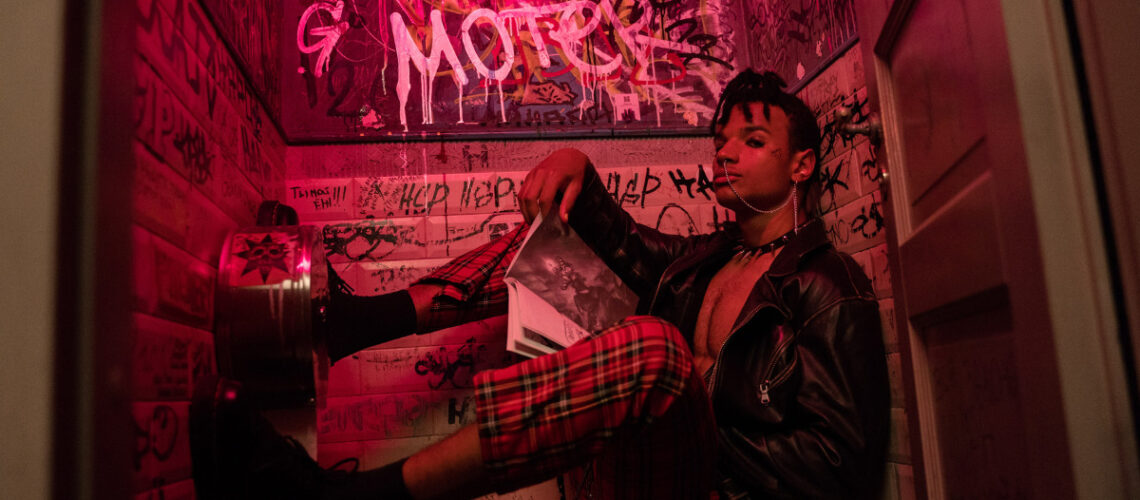The fascinating relationship between music and fashion has been a driving force in the ever-evolving world of style. From the rebellious spirit of punk to the urban swagger of hip-hop, music genres have consistently shaped fashion trends and subcultures throughout the years. This blog post delves into the influential journey of music through fashion, tracing the transformative power of punk, the flamboyant glam rock era, the street-smart hip-hop scene, the grunge movement, and the present-day fusion of music and fashion.
Punk Rock: From Rebellion to Runway
Punk rock, emerging in the mid-1970s, represented a rejection of mainstream culture and a fierce embrace of rebellion. Its distinctive fashion sense became a visual representation of this attitude. Punk fashion was characterized by DIY (Do It Yourself) aesthetics, featuring leather jackets adorned with studs, safety pins, ripped t-shirts, and spiky hairstyles. This style was a rejection of conventional norms, reflecting the music’s raw energy and anarchic spirit.
Punk’s influence on fashion became apparent with the rise of designers like Vivienne Westwood, who incorporated punk elements into high fashion. The boldness of the punk movement led to the popularization of leather jackets, torn jeans, and unconventional accessories. This marked the beginning of music-driven fashion trends and their transition from subculture to the mainstream.
Glam Rock: Bowie and the Extravagant 1970s
Glam rock was a flamboyant and extravagant genre that emerged in the early 1970s. Led by icons like David Bowie, T. Rex, and Roxy Music, it blended music and fashion to create a new sense of self-expression. Glam rock musicians celebrated androgyny, theatricality, and glittering costumes, ushering in a new era of gender-bending fashion.
Bowie, in particular, pushed the boundaries of fashion and identity. His alter ego, Ziggy Stardust, was an androgynous space rocker whose flamboyant outfits and striking makeup captivated the world. Glam rock’s influence on fashion was evident in the adoption of platform shoes, metallic fabrics, and bold makeup by both men and women. This era laid the foundation for the blurring of gender lines in fashion and the acceptance of unconventional styles.
Hip-Hop: From the Streets to the Catwalk
The late 1970s and early 1980s saw the birth of hip-hop, a genre that would have a profound impact on both music and fashion. Originating in the South Bronx, hip-hop was not just a musical movement but also a cultural revolution that celebrated street art, breakdancing, and graffiti. This subculture introduced a unique style that reflected the struggles and triumphs of urban life.
Hip-hop fashion was characterized by oversized clothing, baseball caps, sneakers, and gold chains. It was an embodiment of street-smart coolness and authenticity. Brands like Adidas and Nike found their place in the hearts of hip-hop enthusiasts, and the “bling” culture was born, with artists like Run-DMC showcasing their love for gold jewelry.
As hip-hop music grew in popularity, its fashion influence extended to the mainstream. Luxury fashion brands began collaborating with hip-hop artists and incorporating streetwear elements into their collections. The hip-hop culture brought diversity and urban aesthetics to the forefront of fashion, challenging traditional ideas of style and beauty.
Grunge: Nirvana and the 1990s Revolution
The 1990s witnessed the rise of grunge, a genre led by bands like Nirvana, Pearl Jam, and Soundgarden. Grunge was the antithesis of the glamour and excess of the 1980s, offering a raw and unpolished approach to both music and fashion. Grunge fashion was characterized by flannel shirts, ripped jeans, and a disheveled appearance.
The influence of grunge on fashion was a reflection of the genre’s anti-establishment attitude. It was a rejection of the consumer-driven culture of the 1980s, opting for a more minimalist and “back-to-basics” look. This style resonated with the disillusioned youth of the time, and it marked a stark departure from the flashy fashion trends of the previous decade.
The Fusion of Music and Fashion Today
In the 21st century, the influence of music on fashion has become more diverse and intertwined than ever. Musicians like Kanye West and Rihanna have successfully bridged the gap between music and fashion, launching their own clothing lines and collaborating with high-end designers. The concept of the “musician-designer” has become a significant trend in the fashion industry.
Furthermore, social media has revolutionized the way music and fashion converge. Platforms like Instagram and TikTok have created a space for musicians and influencers to showcase their unique styles and connect with audiences on a global scale. Music festivals like Coachella and Lollapalooza have also become hubs for experimental fashion, with attendees pushing boundaries and setting new trends.
The influence of music on fashion has been a dynamic and evolving journey. From the punk rebellion of the 1970s to the glamorous extravagance of the 1980s, and from the street-smart attitude of hip-hop to the grunge minimalism of the 1990s, music genres have consistently shaped fashion trends and subcultures. Today, the fusion of music and fashion continues to redefine the industry, creating a dynamic space for self-expression and individuality.
As the relationship between music and fashion continues to evolve, we can only anticipate more groundbreaking collaborations, unique styles, and innovative trends. Fashion will always be a reflection of the times, and music will remain a powerful force in shaping the way we express ourselves through clothing.

